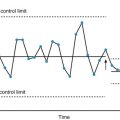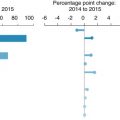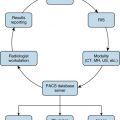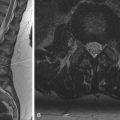Abstract
Although many quality and safety topics are applicable to all aspects of radiology, there are several that are especially critical or unique to pediatric patients, including radiation reduction, sedation, and selection of the optimal study. The emphasis of the radiation reduction discussion will be radiation exposure from computed tomography, because it is the major contributor of ionizing radiation in children. Additional modalities, including fluoroscopy, interventional radiology, and nuclear medicine are also discussed. Sedation is a vital component for many diagnostic imaging studies and image-guided procedures in children. As pediatric exam volumes increase, there is a premium placed on minimizing patient motion safely and efficiently. Keeping children comfortable and managing pain during examinations is also of utmost importance, particularly during interventional procedures. Sedation definitions, screening assessment, common agents, and the future implications of sedation are discussed. Another critical aspect of providing high-quality and safe imaging to children is performing the optimal study. There are two main strategies for determining the best test , which are often complementary: utilization of the pediatric radiologist as a consultative physician and utilization of decision support tools. The American College of Radiology Appropriateness Criteria in Children are discussed.
Keywords
Children, decision support, pediatric, quality, radiation exposure, safety, sedation
Although many of the quality and safety discussions throughout this volume are applicable to all aspects of radiology including the imaging of children, there are several topics that are especially critical or unique to pediatric patients including radiation reduction, sedation, and selection of the optimal study.
Radiation Reduction
In recent years, medical imaging has become a major source of ionizing radiation exposure, with the most significant contributor being computed tomography (CT) scans. In the United States, the annual number of CT scans has steadily increased from 3 million in 1980, to 26 million in 1998, to more than 70 million in 2008. Ionizing radiation in doses administered by CT scans may cause damage to DNA and increase the lifetime risk of cancer. The lifetime risk of developing cancer is cumulative and increases with repeated exposures. It is well accepted by the medical community that children are more sensitive to ionizing radiation than adults because their organs and tissues are still developing. Furthermore, because children have a longer life expectancy from the time of exposure, their lifetime cancer risk is higher.
It is therefore critical for every medical professional who orders or performs imaging studies to decrease the radiation exposure to the minimum required for the diagnosis and management of children. This is the central principle of the as low as reasonably achievable (ALARA) concept and is reflected in the guidelines of the Image Gently campaign that was launched in 2008 by the Alliance for Radiation Safety in Pediatric imaging.
Following a review of several basic measures of radiation, the emphasis of the discussion in this section will be the reduction of radiation exposure from CT, which is the major contributor of ionizing radiation. Additional modalities such as fluoroscopy are also discussed.
Basic Measures of Radiation
Absorbed dose: This term refers to the radiation dose concentration applied to a given unit or volume and is measured in grays (Gy).
Dose equivalent: This term, expressed in sieverts (Sv), refers to the biological effect of a given type of radiation in relation to the gamma or x-ray.
Effective dose: This term is a method of converting dose to specific organs to an equivalent risk to the whole body (measured in millisieverts [mSv]).
CT dose index (CTDI): This is a measurement of radiation dose based on a phantom (32 or 16 cm). This measurement takes into account the absorbed dose within a slice.
The measure of CTDI volume (CTDIvol) is more standard and takes into account the contribution of pitch: CTDIvol = CTDI/pitch. Pitch is defined as the distance of table translation in the z -axis per rotation of the scanner gantry.
Dose length product (DLP): This is the product of CTDIvol and the scan length in centimeters. DLP is the radiation dose of the entire scan, expressed in mGy•cm.
It is important to understand that CTDIvol and DLP are measures of radiation output and not of patient dose. The size-specific dose estimate is an estimate of the patient dose taking into consideration the thickness of the torso. This applies only to CT examinations of the torso.
Efforts to Reduce Radiation Exposure From Computed Tomography Scans
The Image Gently campaign recommends that radiologists take the lead and be committed to increase awareness and to work in collaboration with clinicians, technologists, and physicists to reduce radiation doses. In addition, it recommends revising CT protocols by eliminating multiphase scanning (because additional phases rarely add useful information in children), adjusting the doses administered in each scan, and limiting the scans to the area of interest.
Studies demonstrated that such interventions led to significant reductions in the number of CT scans and in the administered radiation doses. This was achieved by increasing the awareness of clinicians, radiology residents, and CT technologists through education and training. Introduction of alternative methods of imaging (e.g., ultrasound for acute appendicitis, magnetic resonance imaging [MRI] for headache) and daily interactions with the ordering clinicians, particularly in pediatric emergency departments where the majority of CT scans are ordered, played a significant role as well.
Revision of scanning protocols to reduce the administered dose of each scan may involve automatic tube current modulation, adjustment of the tube potential (peak kilovoltage), and use of modern algorithms that enable significant dose reduction while maintaining diagnostic image quality (e.g., Adaptive Statistical Iterative Reconstruction). This should be done in collaboration with medical physicists.
Efforts to Reduce Radiation Exposure From Digital Radiography
Digital radiography has largely replaced traditional film radiography and has become the standard in the United States. Although it has many advantages, there is a risk of exposure to higher radiation doses. It is therefore important to educate radiologists and radiographers to prevent unnecessary radiation exposure to children. As always, the ALARA principle should be applied, and only the clinically indicated region should be exposed. Grids should only be used when the body part thickness dictates their need. Technologists must properly collimate before the exposure rather than using electronic cropping of the image after the exposure. Automatic exposure control has many advantages, but it should be used cautiously because it may not work well for children.
Efforts to Reduce Radiation Exposure From Fluoroscopy
The Pause and Pulse campaign by Image Gently addresses the need to protect children from radiation exposure during fluoroscopy. It emphasizes the need to child-size the radiation exposure and use pulsed fluoroscopy at the lowest rate required for diagnostic imaging. Prior to the examination, the technologist should select the appropriate setting of the machine for the size of the child and for the examination.
During the examination it is recommended to use breast and gonadal shielding when possible. To decrease scatter and patient doses, it is important to lower the image intensifier, to use appropriate collimation, and to avoid magnification when not necessary. Furthermore, a last image hold can be used instead of a radiographic spot image, which administers a radiation dose about 10 times higher. The radiologist needs to pay attention to the duration of fluoroscopy and to reduce it to the minimum required.
Efforts to Reduce Radiation Exposure From Interventional Radiology
The Step Lightly campaign by Image Gently addresses radiation protection of children who undergo interventional procedures. Interventional procedures can be performed under CT or fluoroscopic guidance. The principles are similar to the other, previously discussed, modalities and apply the same steps that were discussed in the CT and fluoroscopy sections. These steps involve shielding, collimation, child-sizing the exposure, and using the lowest doses that are required for diagnosis and management.
Efforts to Reduce Radiation From Nuclear Medicine
Nuclear medicine tests may be essential for diagnosing illnesses in children. As in every other modality in which ionizing radiation is administered, it is important to follow the ALARA principle, to perform tests only when justified, and to consider alternative imaging modalities. When performing the tests it is important to child-size the doses of the administered radiopharmaceuticals. For specific doses, Image Gently provides the 2014 Update of the North American Consensus Guidelines for Pediatric Administered Radiopharmaceutical Activities .
Sedation
Sedation is a vital component for many diagnostic imaging studies and image-guided procedures in children. Its use has grown in recent years due to a variety of factors. There are newer, more effective agents with improved adverse effect profiles. As pediatric exam volumes increase, there is a premium placed on minimizing patient motion safely and efficiently. Keeping children comfortable and managing pain during examinations are also of utmost importance, particularly during interventional procedures.
The goals of sedation in the pediatric patient include (1) keeping the patient safe, (2) minimizing any pain or discomfort, (3) minimizing any anxiety or potential psychological trauma, (4) controlling behavior and motion to ensure a successful examination, and (5) returning the patient to a state in which he or she may be safely discharged from the department.
Managing sedation in radiology departments is a multidisciplinary task. This team of providers may consist of one or more radiologists, anesthesiologists, critical care physicians, nurse anesthetists, registered nurses, child life specialists, technologists, and other medical personnel. The area in which sedation is administered should be fully equipped to manage emergencies and/or resuscitation. Most major complications from sedation are adverse respiratory events, including airway compromise, hypoventilation, hypoxemia, and apnea. Cardiovascular complications such as hypotension or arrest may also occur. Rare complications from sedation include allergic reactions and seizures. To guard against these potential life-threatening events, sedation facilities should have emergency kits (crash carts) on hand and a protocol in place to recruit backup emergency services.
Sedation in a radiology department presents some unique challenges. It requires the coordination of multiple providers, services, and devices to be brought together simultaneously to administer sedation. These difficulties are often compounded by the need to allay fears of children and their families and by the nature of a busy schedule that prioritizes throughput. Radiology suites usually have bulky equipment that the sedation team must maneuver around to access the patient. Providers also must remain mindful of MRI safety when selecting their equipment. This can be particularly challenging if a severe adverse event occurs with a patient in the magnet. Finally, sedation for imaging often requires the child to be transported to and from a nonradiology location, such as a procedure room or postanesthesia care unit. This distance may be substantial depending on the department layout and the location of these resources. These considerations often impact where sedation can be initiated and when the patient is transported, which are the two periods associated with the greatest adverse event risk.
In general, healthy children 6 to 7 years and older can tolerate most diagnostic imaging examinations without sedation, including MRI. Most infants younger than 3 to 4 months can avoid sedation for MRI by feeding and then letting them fall asleep just prior to the examination. Young children between these age groups most often require sedation for diagnostic imaging. Older children who are developmentally delayed or who have physical impairments also may need sedation to minimize motion or reduce anxiety. The inherent risks and costs of sedation may be avoided through several alternative techniques. MRI-compatible video goggles, digital video disk players, wall-mounted television screens, and headphones playing patient-selected music may all be employed. Oral sucrose solution (e.g., Sweet-Ease), pacifiers, and swaddling are used to calm newborns. Child life or play specialists are often invaluable in distracting patients during imaging studies and may introduce anxious children to their upcoming exam through videos or toys (e.g., miniature plastic CT gantry).
Definitions
- •
Minimal sedation (anxiolysis): The patient is awake but calm and responds normally to verbal stimuli. Respiratory and cardiovascular functions remain normal.
- •
Moderate sedation (“conscious sedation”): The patient is drowsy but responds purposefully to verbal or light tactile stimulation. Respiratory and cardiovascular functions remain normal.
- •
Deep sedation: There is depressed consciousness, and the patient cannot be easily aroused; he or she may respond purposefully after repeated verbal or tactile stimulation. Respiratory and cardiovascular function may be impaired, and an artificial airway may be required. This state may be indistinguishable from general anesthesia.
- •
General anesthesia: There is complete loss of purposeful response to verbal and tactile stimuli. The patient’s ability to maintain the airway is typically lost, and cardiovascular function may be impaired.
Despite these definitions, from a practical standpoint, sedation should be viewed as a continuum. It is frequently difficult to distinguish deeper levels of sedation clinically, and the patient may move between levels of sedation during an exam. At some institutions, the only levels of sedation generally used are mild sedation and general anesthesia.
Practitioners administering sedation should be appropriately licensed and credentialed to do so. They must be skilled in identifying the varying levels of sedation and be prepared to recover the patient from at least one level deeper than intended. Providers should be able to recognize loss of or impending airway compromise and be prepared to deliver respiratory support as warranted. They must be intimately familiar with the pharmacology of the administered sedative(s), its antagonist(s), and any rescue medications in the emergency kit.
Screening Assessment
The screening evaluation prior to sedating pediatric patients is of critical importance. Key components are a focused review of the child’s current health, any chronic illnesses or underlying disorders, and a review of systems. The physical examination includes a complete upper airway assessment to identify possible intubation difficulties. The team will also elicit a complete medication history and note any allergies. Informed consent for sedation must be obtained and documented according to institutional policy.
One common method to assign overall patient risk from sedation is the American Society of Anesthesiology classification ( Table 25.1 ). Children who are American Society of Anesthesiology class I or II are considered appropriate to receive sedation. Patients in higher classes are at greater risk and should receive additional consideration on a case-by-case basis.









